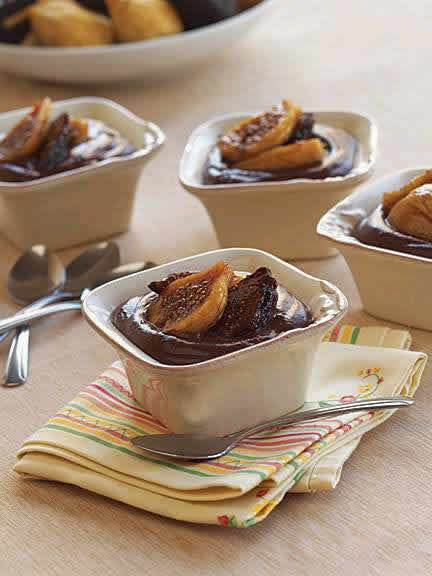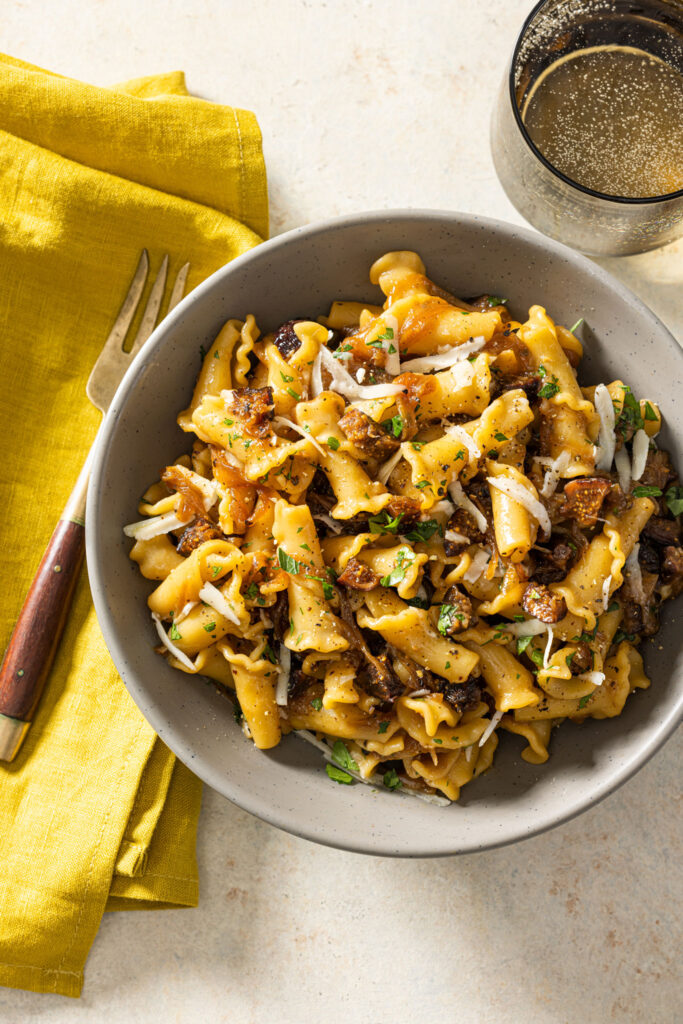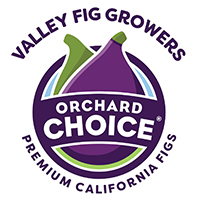Breakfast is a Healthy Start to 2008
Breakfast is often called the most important meal of the day, and rightly so; however, breakfast also is the most skipped meal. Eating breakfast offers many well-documented benefits that include increased energy and the ability to pay attention—that’s for children as well as adults.
Recent studies have examined the role eating breakfast plays in obesity and weight loss. Many people think that by skipping breakfast they are saving calories and will lose weight. But, a study of over 16,000 American adults found that breakfast eaters were leaner than breakfast skippers — and people who ate cereal for breakfast were leaner than those who ate meat or eggs.
Muesli, a cereal made from toasted whole oats, nuts, and fruit is touted as one of the food trends for 2008. Since it uses whole grains, it is high in dietary fiber, and choosing dried figs as the fruit adds even more fiber and natural sweetness. Depending upon the proportion of nuts, muesli can also be relatively high in protein, unlike most other breakfast cereals.
The term Muesli derives from the Swiss German word mus, which means ‘mixture’. Dr. Maximilian Bircher-Benner invented muesli at the beginning of the 20th century. Bircher-Benner was keenly interested in promoting a healthy diet and exercise, along with eating nutritious foods like Muesli, and forgoing much if not all meat in their diet.
Today’s muesli often differs from the Swiss doctor’s original recipe. Oats can be soaked overnight in juices or water instead of being toasted fresh. A variety of fruits can be used, with dried figs offering the tastiest and most nutritional value. Some people add honey or even chocolate to their homemade versions. There are numerous recipes available, but the web site www.myrecipes.com, offers two that call for dried figs and are especially good, Mediterranean Muesli and Muesli. Give them a try and let us know what you think.
Figs’ Mighty Minerals and More
By Cherryl Bell, RD, MS
You’ve likely heard a great deal about the fiber content of figs, but perhaps you are not aware that figs are an impressive source of the mineral calcium, containing levels 3.2 times higher than that of other fruits. Along with calcium, figs are a rich source of another important mineral, potassium. But, being the good fruit that figs are, they also offer up a generous amount of the trace minerals iron and copper. One quarter cup of dried figs provides 8 percent of the daily value for iron and copper. Trace minerals are so named because they are needed in trace or smaller amounts. Along with iron and copper, these often-overlooked mighty trace minerals include manganese, zinc and selenium. Though they occur in very small amounts in figs, trace minerals are important dietary elements. Here’s a guide to what they do:
- Iron—serves as an essential part of hemoglobin, which carries oxygen in your blood from your lungs to every body cell, and other enzymes. Helps in brain development. Supports a healthy immune system.
- Copper—helps your body make hemoglobin, needed to carry oxygen in red blood cells. Serves as a part of many body enzymes. Helps your body develop connective tissue, myelin, and melanin. Helps your body produce energy in the cells.
- Manganese—serves as part of many enzymes. Helps in bone formation. Helps in the metabolism of energy from carbohydrates, fats, and proteins.
- Selenium—works as an antioxidant with vitamin E, to protect cells from damage that may lead to heart disease, and perhaps cancer and other health problems. Aids cell growth. Boosts immune function.
- Zinc—promotes cell reproduction and tissue growth and repair. Adequate zinc intake is essential for growth. Associated with more than two hundred enzymes. Helps you body use carbohydrates, proteins, and fats.
Sources: Complete Food and Nutrition Guide, Roberta Larson Duyff, 2006. “Figs, Past, Present, and Future,” Nutrition Today, 2006.
Holiday Recipe Picks
Valentine’s Day — February 14, 2008
Chocolate and fig lovers rejoice on Valentine’s Day with our recipe for Chocolate Pudding with Amaretto Figs! Sweet, luscious amaretto-infused figs sit atop silky, rich dark chocolate pudding–the perfect recipe for your perfect sweetheart. Dark purple Mission figs and amber-colored Golden figs are sliced and steeped in almond-flavored liqueur and spooned on top, or layered in the middle, of the pudding.
Not only is this pudding deliciously rich, but it’s nutritionally packed with calcium, fiber, protein, antioxidants and more. Thanks to the nutrition prowess of figs and the antioxidant contribution of dark chocolate, a serving of Chocolate Pudding with Amaretto Figs contributes health-promoting antioxidants and an amazing 10 grams protein, 314 milligrams calcium and 6 grams dietary fiber—quite a nutritional accomplishment and another thoughtful plus for Valentine’s Day.
Research continues to support the many health benefits of dark chocolate. According to Jeffrey B. Blumberg, director of the Anitoxidants Research Laboratory at Tufts’ Jean Mayer USDA Human Nutrition Research Center on Aging, consuming about an ounce of dark chocolate a day will provide some cardiovascular benefits. He cautions, however, chocolate is high in fat and calories, so moderation is the name of the game. What’s in dark chocolate that sets it apart from other chocolate? It’s the flavonoids. Dark chocolate also has been found to be beneficial in lowering high blood pressure.

Easter — March 23, 2008
Whether it’s a family brunch after a rigorous morning of egg hunting or a gathering in the evening for a celebratory Easter dinner, Mini Ginger-Pear Cakes with Warm Figs and Pears will delight young and old alike.
Mini Ginger-Pear Cakes with Warm Figs and Pears in Brandied Honey Sauce
Makes 6 cakes
- 3/4 cup granulated sugar
- 1/3 cup butter, softened
- 1 large egg
- 1/4 cup finely grated, peeled USA pears
- 1/4 cup finely chopped crystallized ginger
- 1 1/2 cups all purpose flour
- 1 teaspoon ground cinnamon
- 1/2 teaspoon baking powder
- 1/4 teaspoon baking soda
- 1/4 teaspoon ground allspice
- 3/4 cup buttermilk
Warm Figs & Pears in Brandied Honey
- 2 to 3 medium ripe Northwest pears
- 1 tablespoon lemon juice
- 1/3 cup water
- 1/3 cup honey
- 5 tablespoons brandy, divided use
- 1 cup halved, stemmed Orchard Choice or Sun-Maid figs
Preheat oven to 350 degrees. Generously coat 6 mini-bundt® pans * with vegetable cooking spray. Core pears and cut into 18 (1/2-inch) slices. In large bowl, cream sugar and butter with electric mixer. On low speed, beat in egg, then pear and ginger. Combine flour, cinnamon, baking powder, baking soda and allspice. Add flour mixture in three additions, alternating with buttermilk. Spread batter evenly in pans. Bake 18 to 22 minutes or until pick inserted in cake comes out clean. Cool 5 minutes. Turn out onto wire rack. Serve warm or at room temperature.
While cakes bake, prepare sauce: Place pear slices in bowl and toss gently with lemon juice; set aside. In small saucepan combine water, honey and 1/4 cup brandy. Bring to a boil then reduce heat and simmer 2 minutes. Add figs and simmer 3 minutes. Stir in pear slices. Remove from heat and stir in remaining 1 tablespoon brandy. To serve, place cakes on small plates. Arrange fruit on each plate, dividing evenly. Drizzle 1 to 2 tablespoons brandy-honey sauce over fruit and cake.
*Or 9 (2 1/2-inch) muffin pan cups.
In the News in 2008
- Figs and pears joined forces for an entertaining food feature titled, Small Plates, Trendy Taste. Entertain in style with pears and figs. Currently being offered to food editors throughout the country, the recipes include Flank Steak Ribbons With Pear-Fig Salad, Mini Ginger-Pear Cakes With Warm Figs and Pears in Brandied Honey, Garlic Shrimp With Fig Tapenade, Balsamic Glazed Pear and Goat Cheese Crostini. Already, editors in 40 states have requested the food section feature, achieving over 3 million in circulation.
- Valley Fig Growers are a proud sponsor of public televisions most watched cooking show, America’s Test Kitchen. America’s Test Kitchen is a real 2,500 square foot test kitchen located just outside of Boston that is home to more than three-dozen full-time cooks and product testers. Their mission is simple: to develop the absolute best recipes for all of your favorite foods. They test each recipe 30, 40, sometimes as many as 70 times, until they arrive at the combination of ingredients, technique, temperature, cooking time, and equipment that yields the best, most-foolproof recipe. Check your local listings for the time and station in your area.
- Everyone is excited about figs. According to Catering Magazine, the foods to feature for 2008 include figs, apricots, pomegranates and lamb.
- Throughout the holidays it was hard to pick up a food magazine without finding a recipe featuring dried figs. Magazines included Gourmet, Bon Appetit and Food & Wine.
- The National Restaurant Association also is on the fig bandwagon, noting figs as one of their food trends for 2008.
Winter in the Orchards
The 2007 California dried frig crop deliveries to processors are nearly complete. The latest projection of 10,500 tons is far short of the original optimistic estimate of 12,000 tons. Much of the shortfall will be in the Mission fig variety. The overall shortage coupled with fig crop disasters in Europe will fuel price increases to consumers for the first time in years.
In the next few months, fig growers and their crews will be performing end of season orchard clean up and pruning. They also will be watching the weather with hopes that rainfall will supply most of the winter watering required to maintain the trees and ready them for the first growth of spring. If winter rainfall is insufficient, water must be pumped from wells or purchased from local water districts, both expensive propositions.
Winter and early spring is also the time to plant orchard replacement trees or new orchards. Larger growers will plant trees propagated themselves while smaller growers will purchase trees from commercial nurseries.




